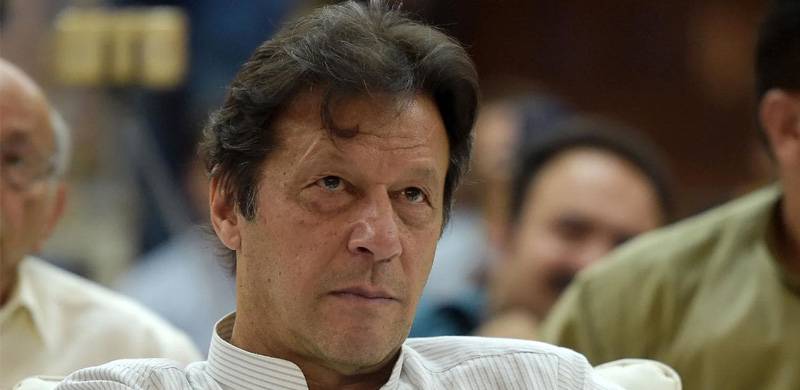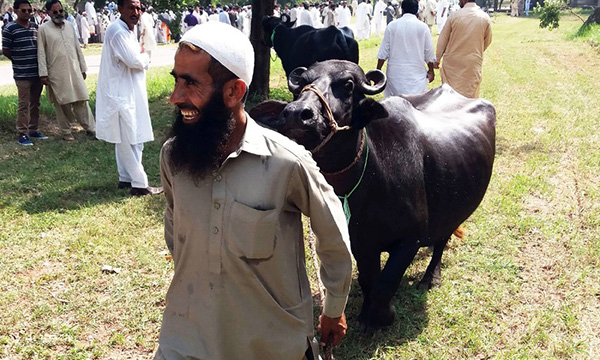
The 100 days are over – which means that the media in Pakistan is now free to critique the PTI government’s policies, actions and so on. However, one shouldn’t expect most of the mainstream media to objectively cover the government’s performance given the interplay of various factors adversely affecting the media in Pakistan – from the taking of the TV ratings system away from the broadcasters and placing it with the TV industry state regulator PEMRA, to the centralizing of government advertising with a ministerial panel that will vet all such ads, to the extensive self-censorship that one sees happen as a routine matter.
Of course, there is a view that tries to explain this and that is that if those who ensured that the PTI made it to government will also now ensure that it is given enough breathing space to perform and govern. The breathing space, this view goes, will come by pushing the media back (and we have seen that happen) and to silence any dissenting voices (we have seen plans are underway on that with the Information Minister having said more than once that a comprehensive media control authority will be set up to monitor and rein in not only electronic but also social media).
https://www.youtube.com/watch?v=ZjM98s9OB7k
As far as economic indicators are concerned, most of them are not as good as they were 3 months ago. Take the three most important macroeconomic indicators. First, the GDP growth forecast which in August was 6.2% for fiscal 2018-19 has now been revised downward to 4%. Inflation, as measured by the Consumer Price Index (CPI) was 5.8% in August 2018 and rose to 6.8% by October, probably in large part by the increase in gas and electricity prices. Also, current expenditure which is expenditure based on the running of the government – and hence its decrease would indicate that the much-hyped austerity campaign is bearing fruit – actually increased by 19% in the first quarter of fiscal 2018-19 compared to the same period the previous year – from Rs 1.24 trillion to Rs 1.48 trillion. Tax collection in the first quarter of the current fiscal year remained static at 2.5% of GDP. To make matters worse, the Public Sector Development Programme, the federal government’s flagship plan for spending on social sectors has been cut from the Rs 1 trillion budgeted by the PML-N government in May of this year – with the result that PSDP spending in the first quarter of fiscal 2018-19 was over 35% less compared to the same period for the previous fiscal year.
The austerity drive
Moving on, we saw how many of the initiatives that the PTI government said it would embark on once coming into power remained undone. The claim that there would be no or minimal protocol has not been implemented and this has been seen in the movement in public places of government VVIPs. There was a much hyped sale of some of the cars of Prime Minister House but these – eventually it was revealed – managed to generate a paltry Rs 190 million in sales revenue.

Other austerity measures like converting the Prime Minister House and Governor Houses into public universities or libraries remain empty campaign promises – and it is likely that that will be the case for the rest of the PTI government’s term. The prime minister had promised to attend Question Hour himself at least once a month and that has not happened even once, and he and other ministers were to travel club class but on commercial flights. We have seen the PM always take his own official plane – and there is one view which says that as PM there is no harm if he does this, not least because of security reasons, but then why make such a fuss about the issue in the first place?
https://twitter.com/omar_quraishi/status/1058236223464996864
Then there was the Atif Mian fiasco and the sale of buffaloes of the PM House, which evoked considerable ridicule and made the auction a laughing stock. Of course, all this was part of the much-hyped austerity drive but the end-result – at least for the first 100 days – has been that government expenditure has only risen – and by a considerable 20%.
The government’s publicity effort for the first 100 days – an advertisement in print in two parts – seems to have bombed as well, mainly because it uses headlines with considerable repetition and mere claims and pronouncements to back its claim that “we’ve been busy” doing things during this time for the betterment of the people. A sharp rise in gas prices, increase in the price of electricity and a planned phasing out of subsidies can hardly be called measures for the betterment of the people.
And that is perhaps why, at the event held by the government at the Convention Centre in Islamabad on November 29 to announce all that it had achieved during its first 100 days, all that we mostly heard were speeches short on facts and actual achievements and long on rhetoric, and yet more promises. And a major element through most of them was that they gave the singular impression that the PTI government still seemed to think it was in opposition and that its place was not in parliament or the PM House but atop a container.
The sooner it comes out of this mindset and gets on with the business of actually governing the country, the better it would be for the party as well as the electorate.
Of course, there is a view that tries to explain this and that is that if those who ensured that the PTI made it to government will also now ensure that it is given enough breathing space to perform and govern. The breathing space, this view goes, will come by pushing the media back (and we have seen that happen) and to silence any dissenting voices (we have seen plans are underway on that with the Information Minister having said more than once that a comprehensive media control authority will be set up to monitor and rein in not only electronic but also social media).
https://www.youtube.com/watch?v=ZjM98s9OB7k
As far as economic indicators are concerned, most of them are not as good as they were 3 months ago. Take the three most important macroeconomic indicators. First, the GDP growth forecast which in August was 6.2% for fiscal 2018-19 has now been revised downward to 4%. Inflation, as measured by the Consumer Price Index (CPI) was 5.8% in August 2018 and rose to 6.8% by October, probably in large part by the increase in gas and electricity prices. Also, current expenditure which is expenditure based on the running of the government – and hence its decrease would indicate that the much-hyped austerity campaign is bearing fruit – actually increased by 19% in the first quarter of fiscal 2018-19 compared to the same period the previous year – from Rs 1.24 trillion to Rs 1.48 trillion. Tax collection in the first quarter of the current fiscal year remained static at 2.5% of GDP. To make matters worse, the Public Sector Development Programme, the federal government’s flagship plan for spending on social sectors has been cut from the Rs 1 trillion budgeted by the PML-N government in May of this year – with the result that PSDP spending in the first quarter of fiscal 2018-19 was over 35% less compared to the same period for the previous fiscal year.
The austerity drive
Moving on, we saw how many of the initiatives that the PTI government said it would embark on once coming into power remained undone. The claim that there would be no or minimal protocol has not been implemented and this has been seen in the movement in public places of government VVIPs. There was a much hyped sale of some of the cars of Prime Minister House but these – eventually it was revealed – managed to generate a paltry Rs 190 million in sales revenue.

Other austerity measures like converting the Prime Minister House and Governor Houses into public universities or libraries remain empty campaign promises – and it is likely that that will be the case for the rest of the PTI government’s term. The prime minister had promised to attend Question Hour himself at least once a month and that has not happened even once, and he and other ministers were to travel club class but on commercial flights. We have seen the PM always take his own official plane – and there is one view which says that as PM there is no harm if he does this, not least because of security reasons, but then why make such a fuss about the issue in the first place?
https://twitter.com/omar_quraishi/status/1058236223464996864
Then there was the Atif Mian fiasco and the sale of buffaloes of the PM House, which evoked considerable ridicule and made the auction a laughing stock. Of course, all this was part of the much-hyped austerity drive but the end-result – at least for the first 100 days – has been that government expenditure has only risen – and by a considerable 20%.
The government’s publicity effort for the first 100 days – an advertisement in print in two parts – seems to have bombed as well, mainly because it uses headlines with considerable repetition and mere claims and pronouncements to back its claim that “we’ve been busy” doing things during this time for the betterment of the people. A sharp rise in gas prices, increase in the price of electricity and a planned phasing out of subsidies can hardly be called measures for the betterment of the people.
Also read: ‘We’ve been busy’: PTI responds to 100-day agenda criticism
And that is perhaps why, at the event held by the government at the Convention Centre in Islamabad on November 29 to announce all that it had achieved during its first 100 days, all that we mostly heard were speeches short on facts and actual achievements and long on rhetoric, and yet more promises. And a major element through most of them was that they gave the singular impression that the PTI government still seemed to think it was in opposition and that its place was not in parliament or the PM House but atop a container.
The sooner it comes out of this mindset and gets on with the business of actually governing the country, the better it would be for the party as well as the electorate.
